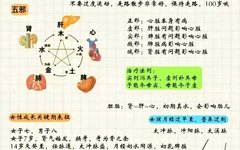Pathogenesis TheoryThe theory that studies the internal mechanisms of disease occurrence, development, outcome, and changes is called pathogenesis theory. As stated in the Suwen: Essential Discussion on True Principles, “Examine the pathogenesis without losing the appropriate qi” and “Carefully guard the pathogenesis, each serving its purpose” are both contents of this theory.1. Causes of Disease: There are many reasons for illness, which the Huangdi Neijing categorizes into two types. Wind, rain, cold, and heat are a summary of the “Six Excesses”; yin and yang, joy and anger summarize the “Seven Emotions”; diet and living conditions refer to “dietary labor and fatigue.” This can be considered the origin of the later three causes theory. 2. Onset of Disease: The comparison of the forces of righteousness and evil determines the occurrence and development of disease, which is the meaning of “When the righteous qi is preserved internally, evil cannot invade.” The Suwen: Discussion on Ancient True Nature states, “When the spirit is kept internally, where does disease come from?” and the Suwen: Discussion on Heat Diseases states, “Where evil gathers, its qi must be deficient,” all of which demonstrate this point.3. Disease Changes: The changes in disease are complex. The Huangdi Neijing summarizes disease changes from multiple aspects, including categorization by yin and yang, by exterior and interior, and by cold and heat. From the perspective of deficiency and excess, excess refers to the prevalence of evil qi, while deficiency refers to the decline of righteous qi. In summary, there are cases of righteous deficiency with evil excess, evil excess with righteous not deficient, righteous deficiency without evil excess, and righteous not deficient with evil not excess.Author: Zhu Yu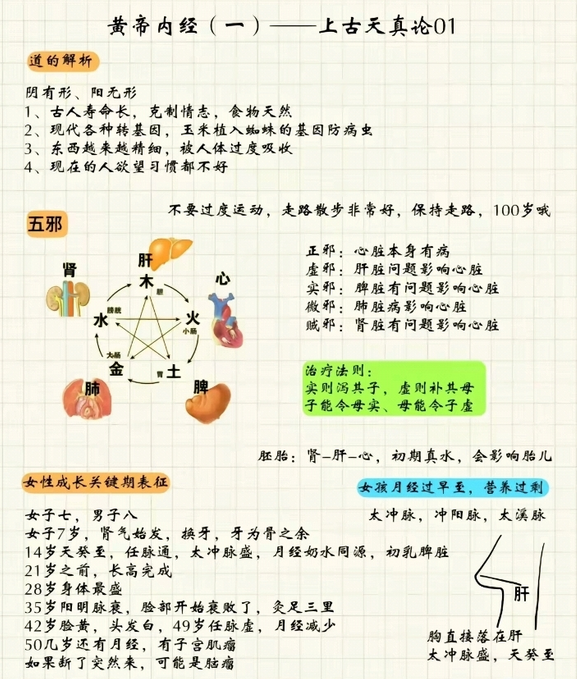
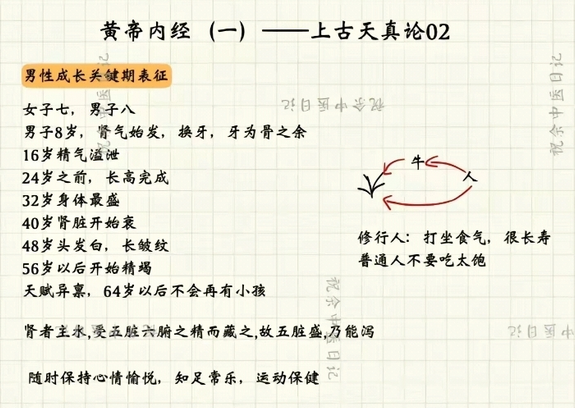

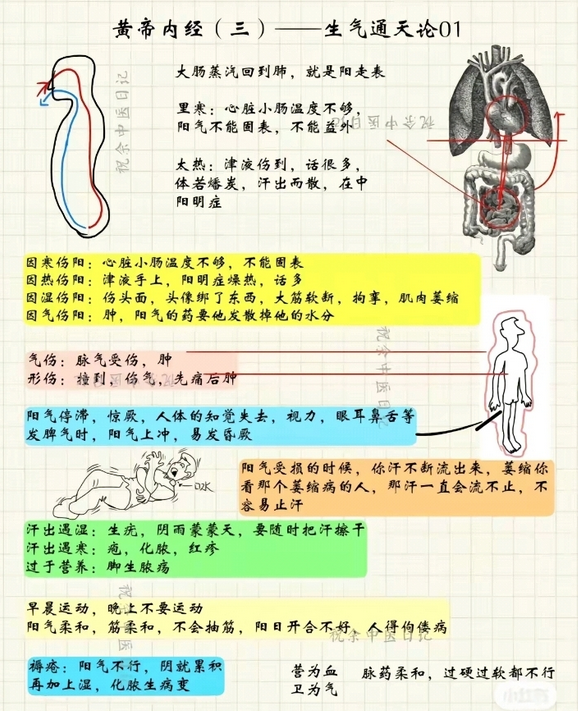
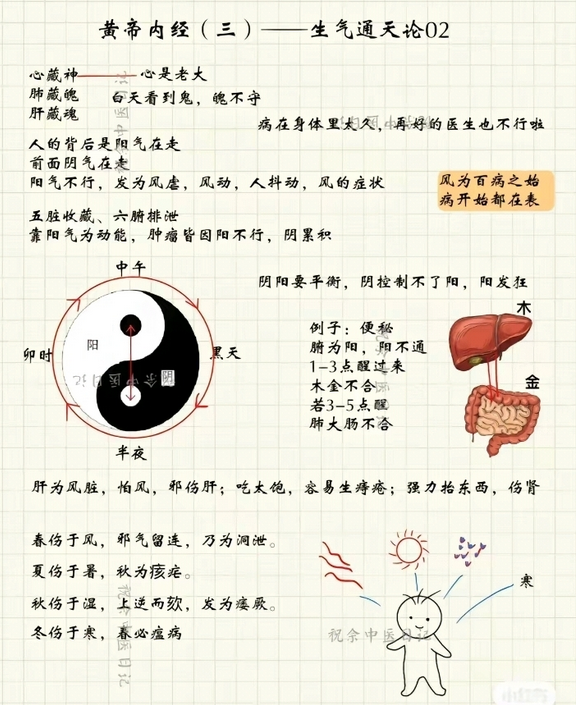
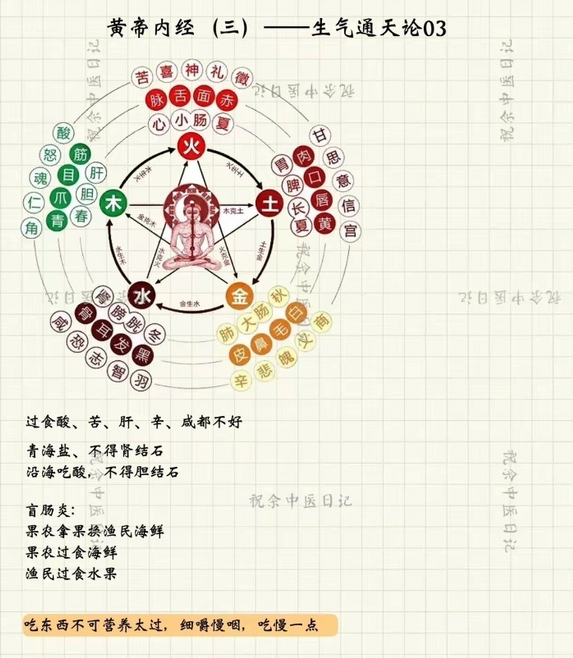
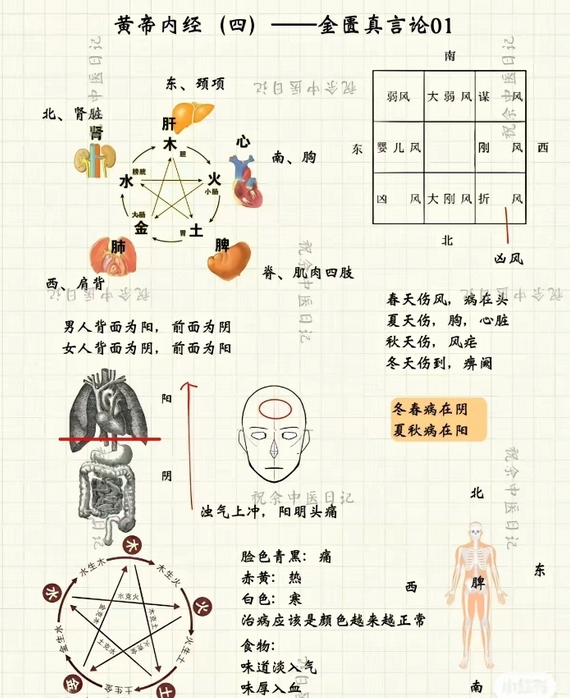
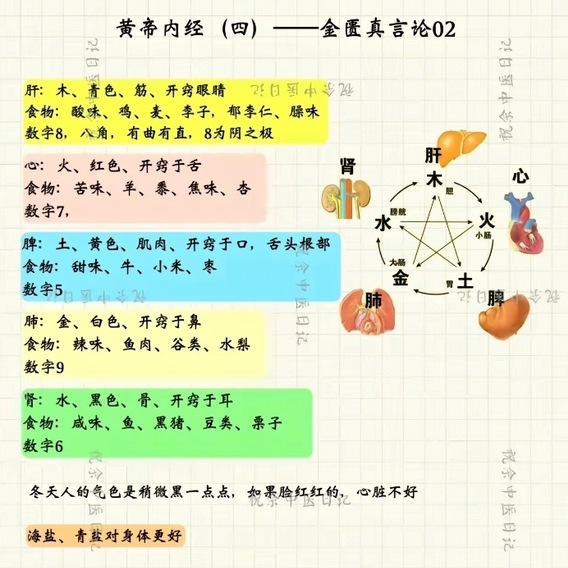
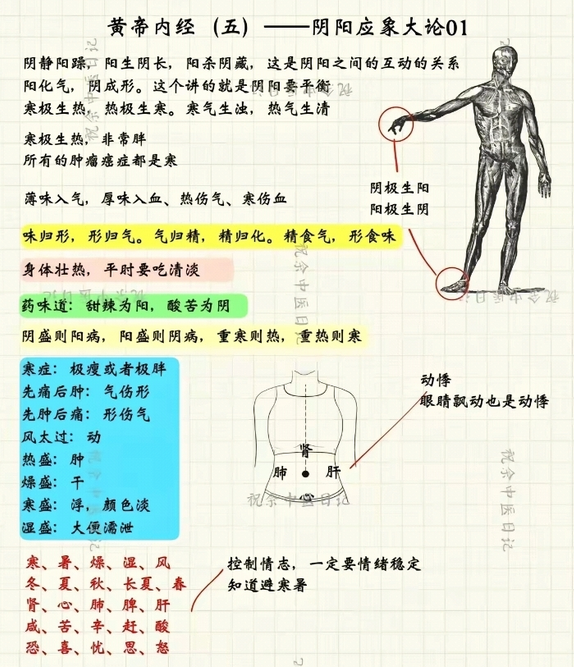
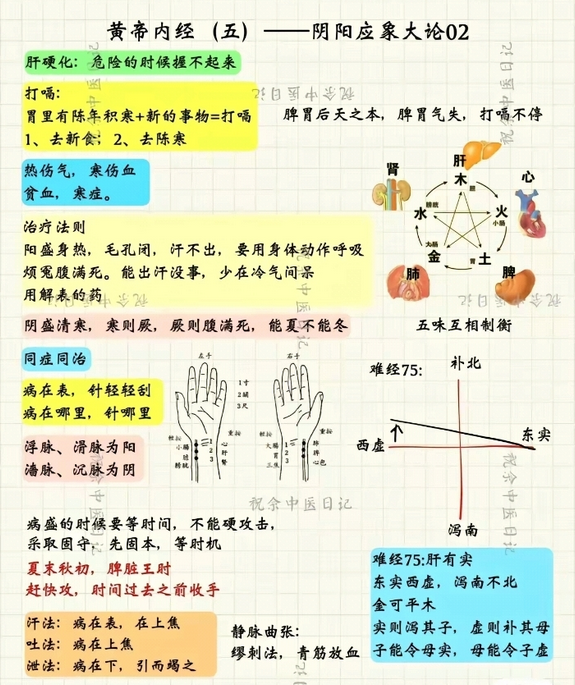
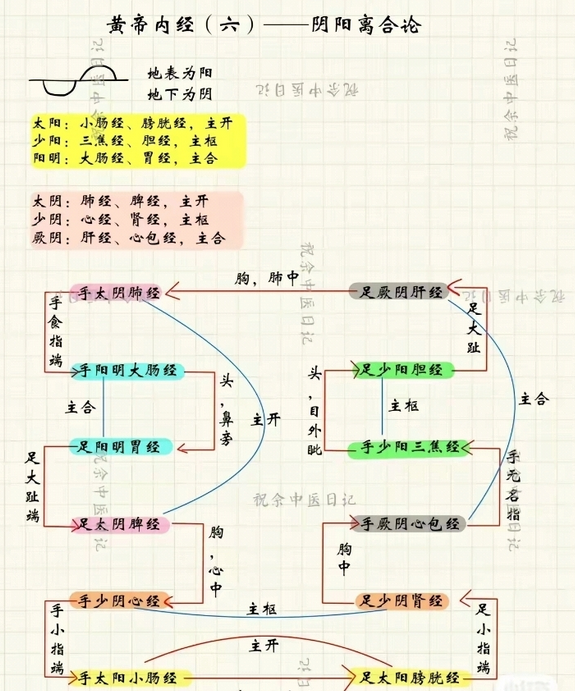
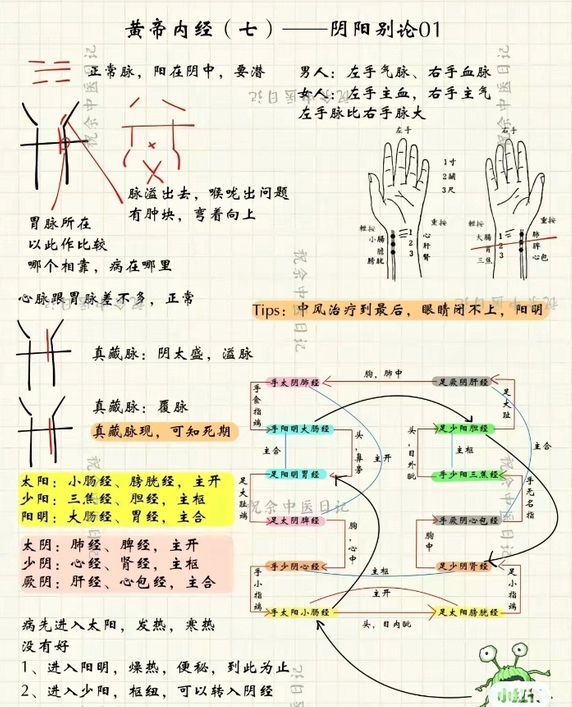
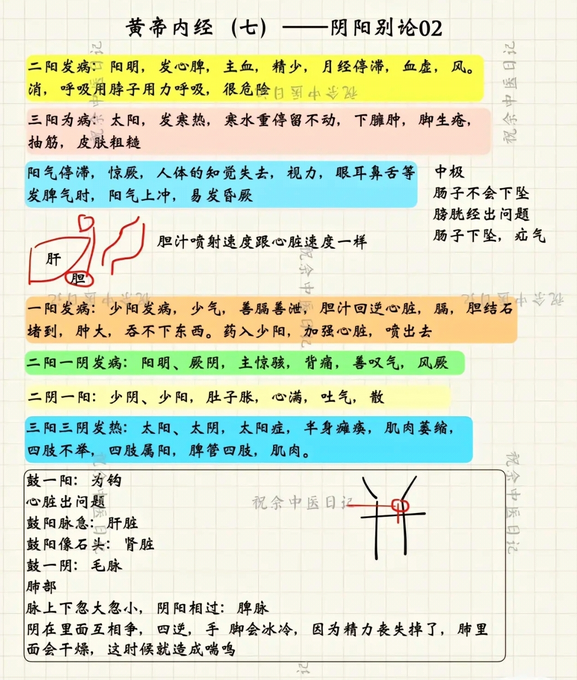
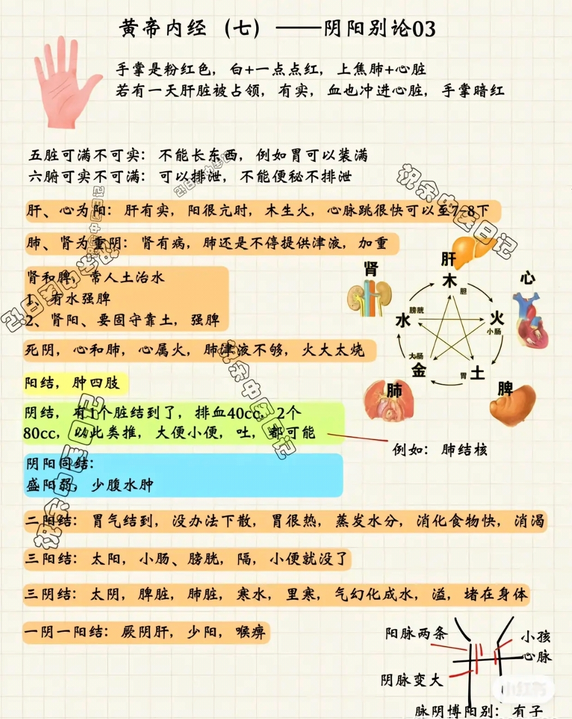
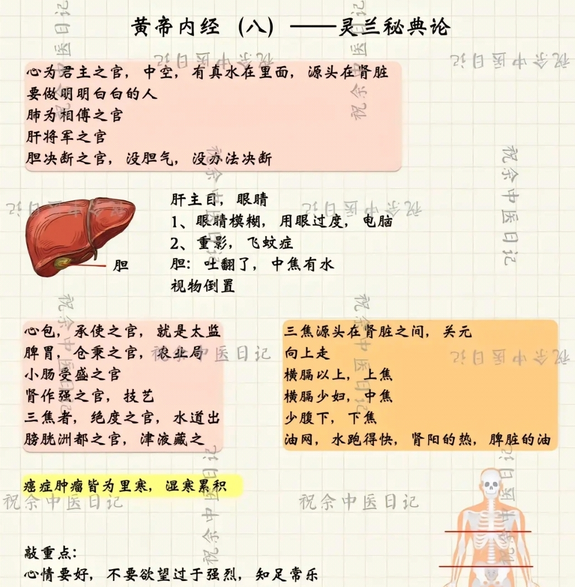
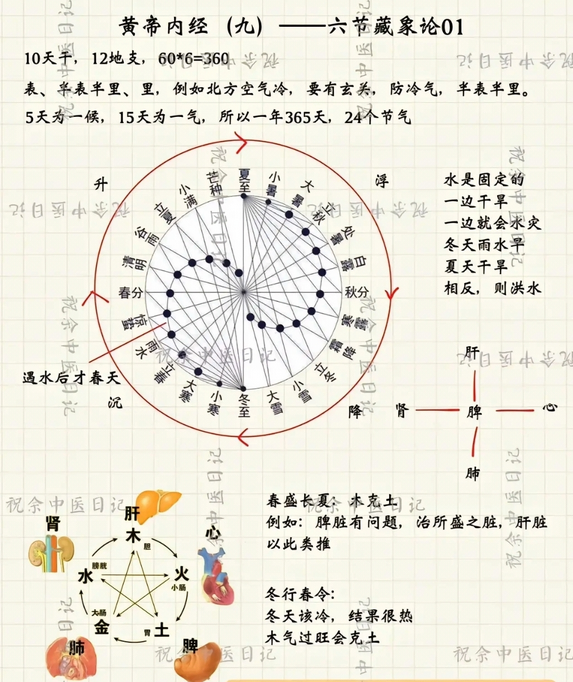
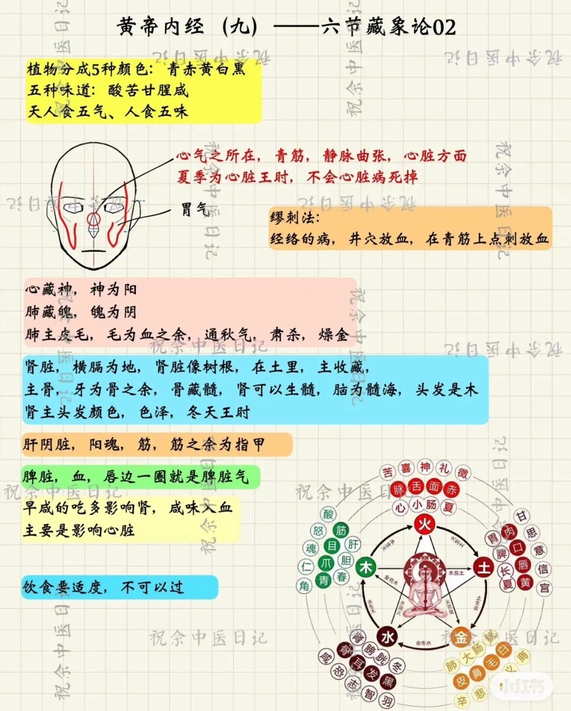
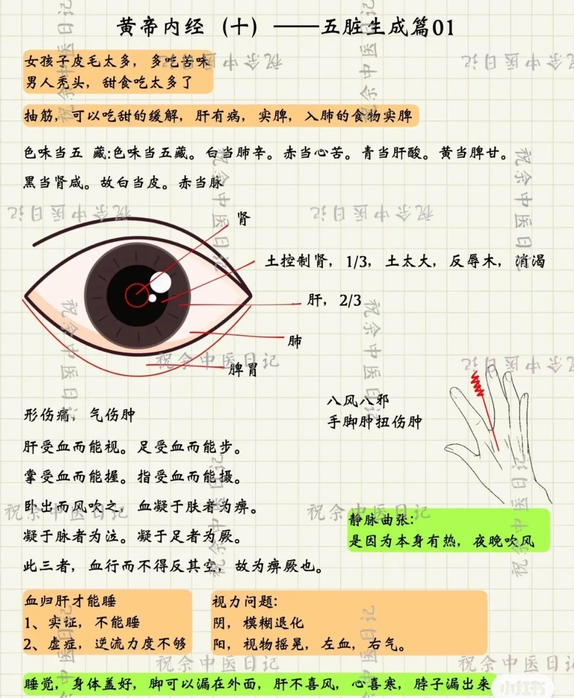
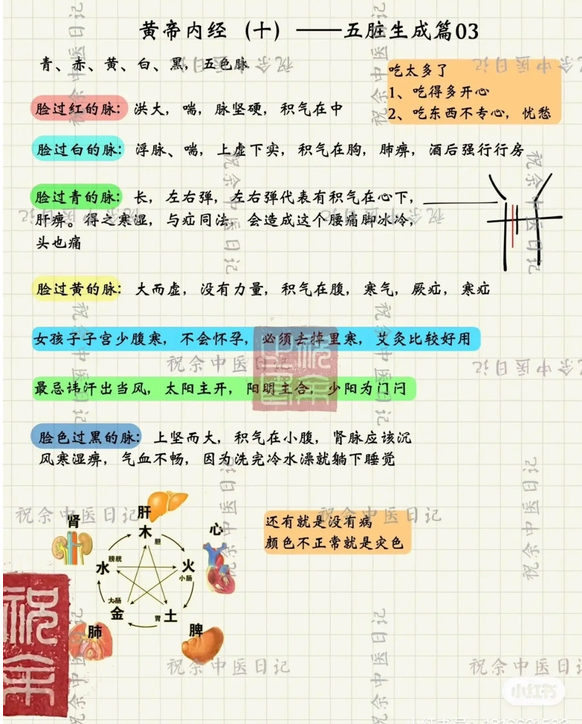
Zangxiang Theory
The Zangxiang theory studies the physiological functions of the body’s organs and meridian systems, their interconnections, and their external manifestations as well as their relationship with the external environment. The Zangxiang theory is based on the five zang organs, six fu organs, and twelve meridians. Of course, the content related to anatomy is far more than this, but more importantly, it has been continuously enriched through extensive medical practice and repeated verification, ultimately reaching a level that guides clinical practice. The Huangdi Neijing fully recognizes the dialectical principle that “what exists internally must manifest externally,” making the Zangxiang theory systematic and complete. The Zangxiang theory mainly includes the organs, meridians, and essence, qi, and spirit. The organs consist of the five zang, six fu, and extraordinary fu organs.The five zang are the liver (Gan), heart (Xin), spleen (Pi), lung (Fei), and kidney (Shen). The six fu are the gallbladder (Dan), stomach (Wei), large intestine (Da Chang), small intestine (Xiao Chang), bladder (Pang Guang), and san jiao (San Jiao). The extraordinary fu organs are also classified as fu but differ from the usual ones, referring to the brain (Nao), marrow (Sui), bones (Gu), vessels (Mai), gallbladder (Dan), and uterus (Zi). Here, the gallbladder is one of the major fu organs and also belongs to the extraordinary fu. Although the zang and fu are differentiated by their morphology and functions, they are not isolated but work together and support each other. The meridian system can be divided into three parts: the meridians, collateral vessels, and acupoints.The twelve regular meridians are: Hand Taiyin Lung Meridian (Shou Taiyin Fei Jing), Hand Yangming Large Intestine Meridian (Shou Yangming Da Chang Jing), Foot Yangming Stomach Meridian (Zu Yangming Wei Jing), Foot Taiyin Spleen Meridian (Zu Taiyin Pi Jing), Hand Shaoyin Heart Meridian (Shou Shaoyin Xin Jing), Hand Taiyang Small Intestine Meridian (Shou Taiyang Xiao Chang Jing), Foot Taiyang Bladder Meridian (Zu Taiyang Pang Guang Jing), Foot Shaoyin Kidney Meridian (Zu Shaoyin Shen Jing), Hand Jueyin Pericardium Meridian (Shou Jueyin Xin Bao Jing), Hand Shaoyang San Jiao Meridian (Shou Shaoyang San Jiao Jing), Foot Shaoyang Gallbladder Meridian (Zu Shaoyang Dan Jing), and Foot Jueyin Liver Meridian (Zu Jueyin Gan Jing). The twelve meridians are interconnected like a loop, with qi circulating within them in a continuous cycle. In addition to the regular meridians, there are the eight extraordinary meridians: Governing Vessel (Du Mai), Conception Vessel (Ren Mai), Penetrating Vessel (Chong Mai), Girdling Vessel (Dai Mai), Yin Heel Vessel (Yin Qiao Mai), Yang Heel Vessel (Yang Qiao Mai), Yin Linking Vessel (Yin Wei Mai), and Yang Linking Vessel (Yang Wei Mai).The collateral vessels that connect the meridians are called luo mai. The smaller ones are numerous and not counted; the larger ones are fifteen, known as the fifteen collateral vessels. The Ling Shu: Meridians describes this in great detail.Acupoints are where the qi of the meridians enters and exits, functioning like transportation, hence the name. The Huangdi Neijing mentions acupoints first in the Su Wen: Discussion on Qi Points and again in the Su Wen: Discussion on Qi Houses, both mentioning three hundred sixty-five points. In reality, the Qi Points lists three hundred forty-two points, while the Qi Houses lists three hundred eighty-six points.Essence, Qi, and Spirit are the three treasures of the human body. Essence includes essence (Jing), blood (Xue), and body fluids (Jin Ye); qi refers to ancestral qi (Zong Qi), nutritive qi (Rong Qi), and defensive qi (Wei Qi); spirit refers to spirit (Shen), soul (Hun), corporeal soul (Po), intention (Yi), and will (Zhi). Essence and qi are the basic substances that constitute the human body, while qi and spirit are the complex functions of the body. It can also be said that qi is the master of essence, essence is the residence of spirit, and spirit is the function of essence and qi.Treatment Principles TheoryThe theory that studies treatment principles is called treatment principles theory.1. Preventing Minor Issues: This includes preventing disease before it occurs and preventing changes once disease has occurred. For example, “Nurturing yang in spring and summer, nurturing yin in autumn and winter” all refer to disease prevention, and treating diseases early to prevent their progression.2. Adapting to Time, Place, and Person: Adapting to time means advising practitioners not to use medications that conflict with the seasonal cold, heat, warmth, and coolness. Adapting to place means that treatment should not be generalized but must be differentiated. The Su Wen: Discussion on Different Methods and Formulas discusses in detail the adaptation to different regions, such as in the eastern region, treatment should use stone needles; in the western region, toxic medicines; in the northern region, moxibustion; in the southern region, fine needles; and in the central region, guiding and pressing techniques. Adapting to person means considering individual differences, as mentioned in the Su Wen: Discussion on Five Constant Regulations and Su Wen: Discussion on Four Losses.3. Priority of Symptoms and Root Causes: This refers to treating the main and secondary aspects of the disease in order. The major principles regarding the priority of symptoms and root causes are most thoroughly discussed in the Su Wen: Discussion on Symptoms and Root Transmission.4. Treating the Root of the Disease: This is the most fundamental principle in the Huangdi Neijing. The Su Wen: Discussion on Yin and Yang Correspondences states, “To treat disease, one must seek the root.”5. Guiding by the Situation: Based on treating the root of the disease, skillfully adapting to changes.6. Coordinating Yin and Yang: This is the essential principle of treatment.7. Correct and Reverse Treatment: Correct treatment, also known as reverse treatment, is a direct method that opposes the disease condition. For example, “Cold treats heat, heat treats cold, deficiency is tonified, and excess is drained”; reverse treatment, also known as following treatment, is like “Cold is treated with cold, heat with heat, unblocking with unblocking, and blocking with blocking.” 8. Appropriate Measures: Whether tonifying or expelling evil, it should be done appropriately, especially for conditions with mixed deficiency and excess, caution is especially necessary. Remember “No excess for excess, no deficiency for deficiency,” meaning that even when tonifying, it should not be excessive.9. Disease as the Root, Practitioner as the Branch: The Su Wen: Discussion on Decoctions and Liquids points out, “Disease is the root, and the practitioner is the branch.” This means that the disease is an objective existence, the root; the physician’s understanding and treatment of the disease is the branch. The physician must base their practice on the patient, so that the root and branch can be harmonized, leading to the cure of the disease.10. Differentiated Treatment: Although the Huangdi Neijing does not explicitly mention the term “differentiated treatment,” it embodies the practice of differentiated treatment. The above points all imply this, and the text already contains the connotations of organ differentiation, meridian differentiation, eight principles differentiation, and six meridian differentiation.11. Formulating Prescriptions and Dispensing Medicines: Although the Huangdi Neijing contains few prescriptions, the principles of its prescriptions are already established.12. Acupuncture and Moxibustion: The Huangdi Neijing discusses meridians, acupoints, acupuncture, and moxibustion extensively, with various tonifying and draining techniques, including respiratory tonification and draining, formulaic tonification and draining, deep and shallow tonification and draining, slow and rapid tonification and draining, and light and heavy tonification and draining, all of which have been continued in later generations.

